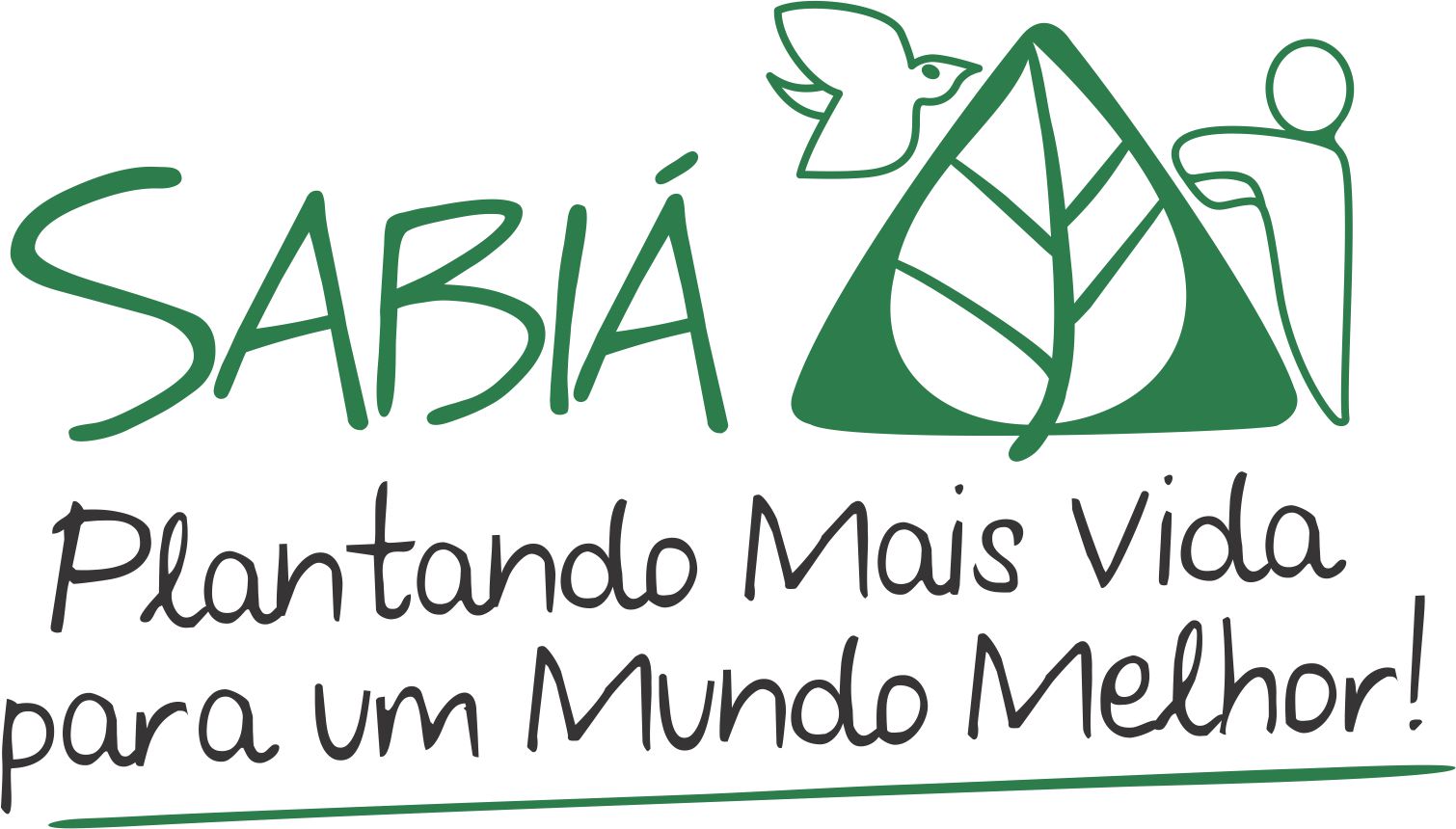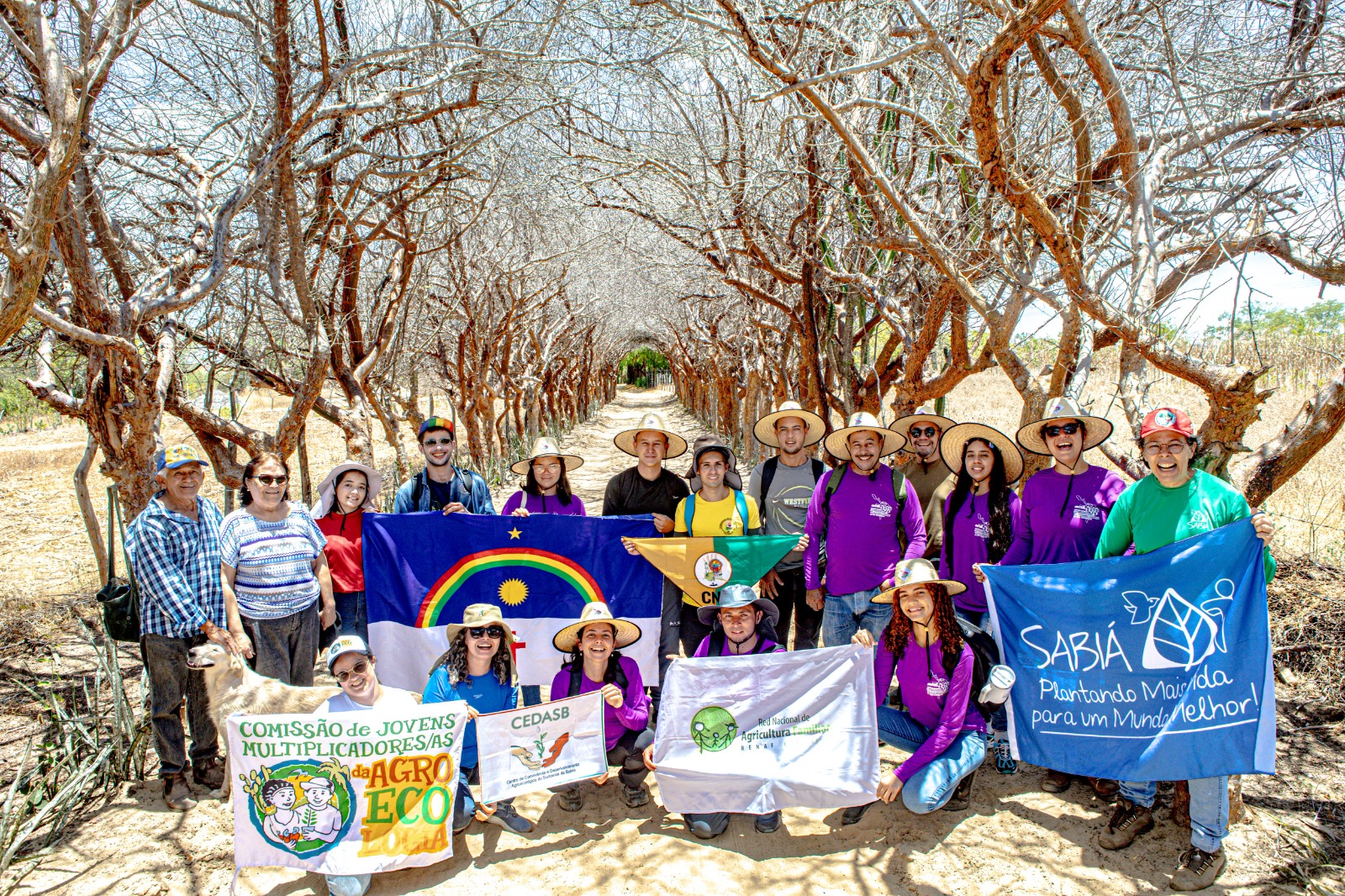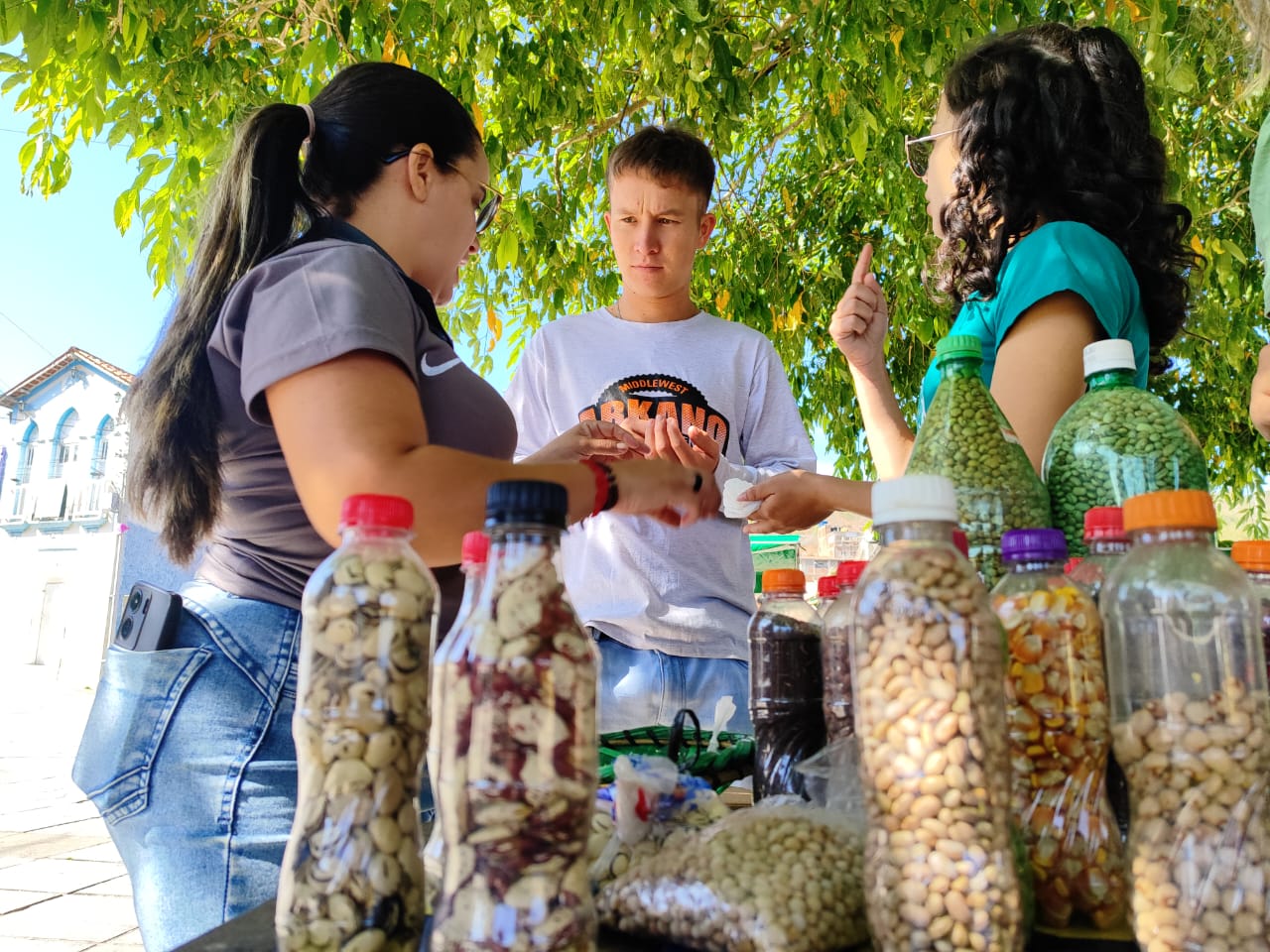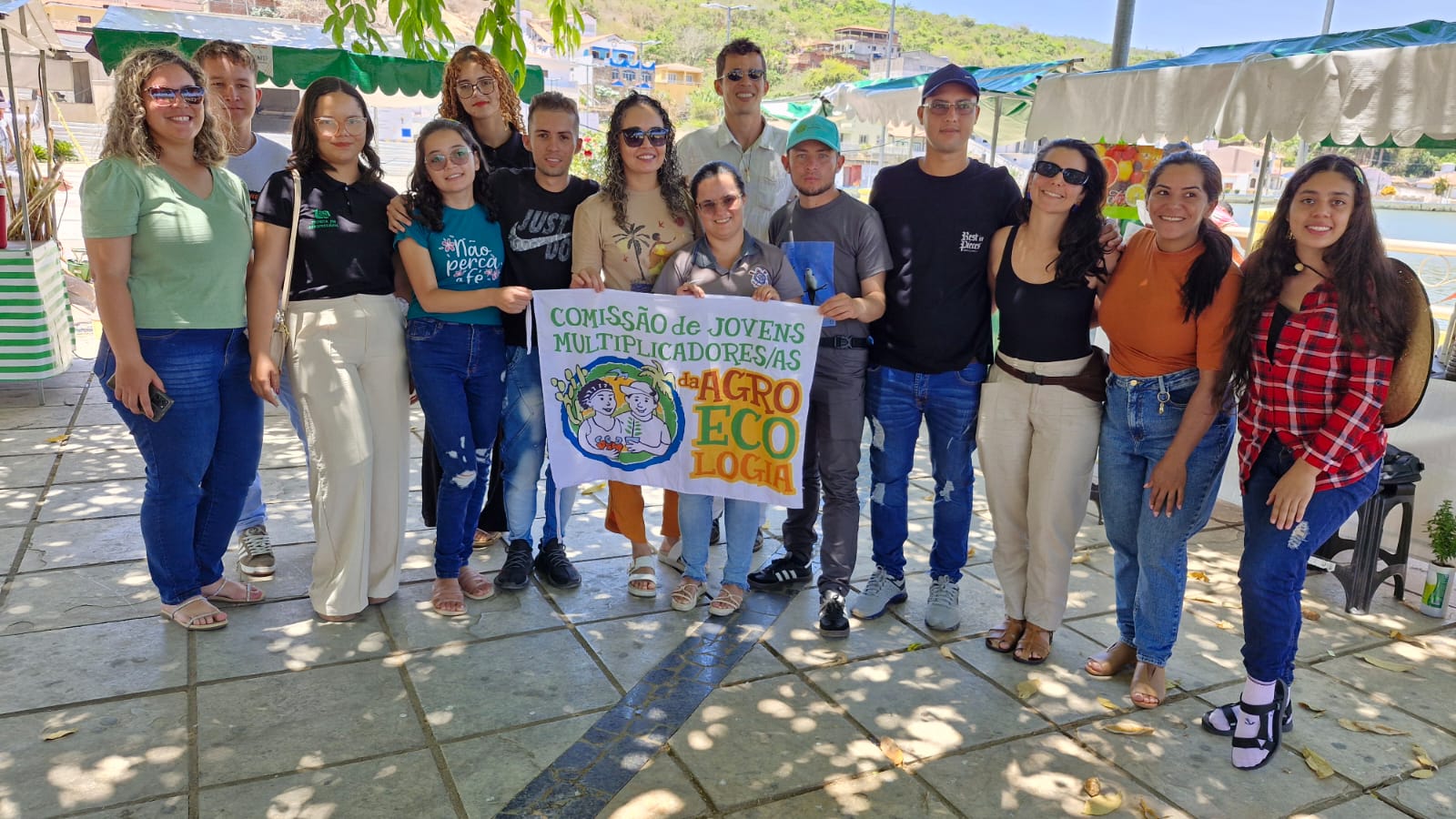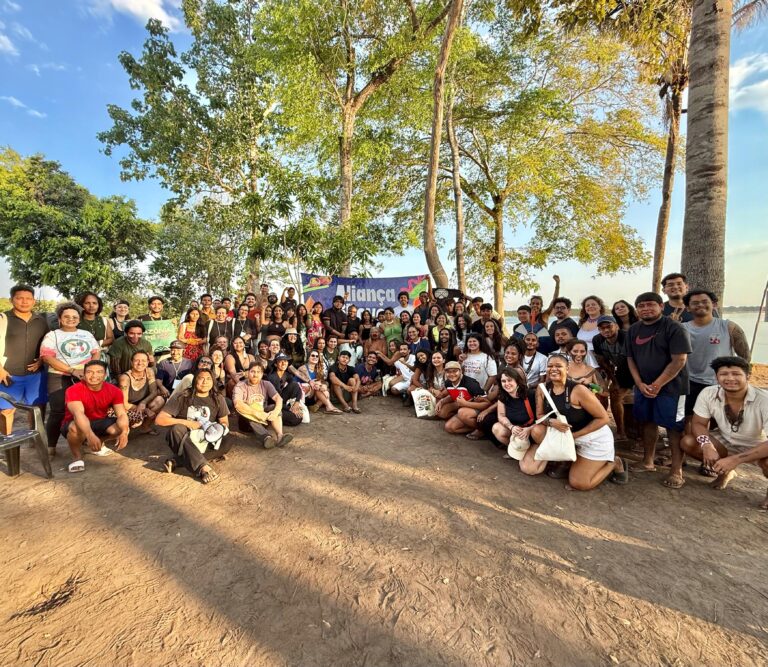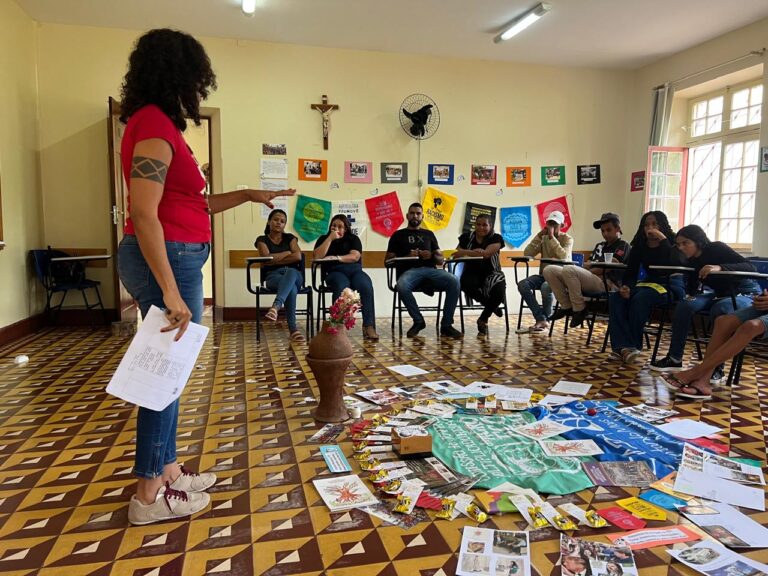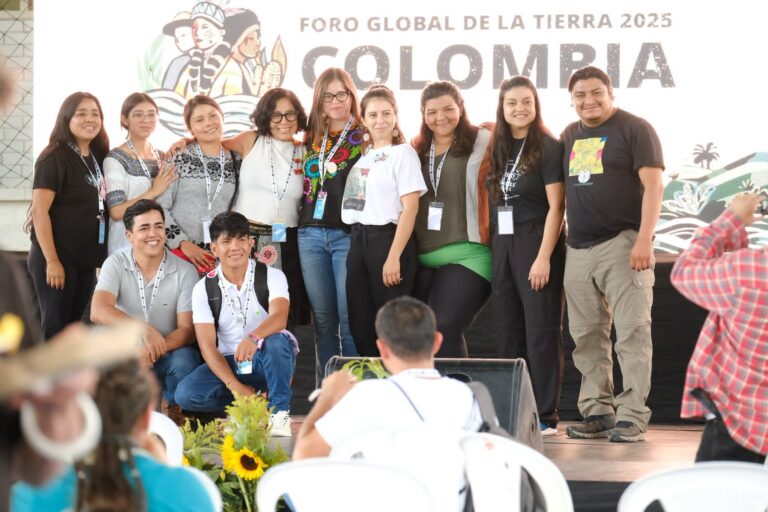Sertão do Pajeú hosts the Latin American Exchange on Climate Solutions in the Semi-arid Regions
By Letícia Maria and Valdirene Alves, young agroecology multipliers
Between October 29 and November 1, the city of Triunfo, in the hinterland of Pajeú, hosted the Latin American Exchange on Climate Solutions in the Semi-Arid.
On the first day, we visited the family of Antônio Queiroz and Raimunda da Silva, in the community of Enjeitado. Antônio recounted the timeline of his first agroforestry system, which was set up in 1996 to restore the banks of the Pajeú River, which runs through his property. The farmer also showed the diversity of plants in his system and the technologies he has for living with the semi-arid region, such as the first water cistern, the second water cistern and the Reuse of Grey Water in the Agroforestry System (RAC/SAF), installed in 2021.
In the afternoon, we visited the Santa Rita community, owned by Nazilda Barbosa and Felícia Panta, where they produce handmade wines, liqueurs and jams. Nazilda spoke about her journey of struggle and overcoming with her daughter Felícia, who has been a single mother and a member of the social movement for five years. It was in the production of artisanal wines that she found a way out of her depression.
Felícia chose to study biology in order to improve the fermented drinks produced by her family. This research was even the subject of her Final Paper and a workshop given to the Commission of Young Agroecology Multipliers (CJMA), a group of which she is a member. Today, the wines of Artesanais Santa Rita are a reference in the region, as well as a tourist route in Bico do Papagaio.
On the 30th, we learned about the agroecological experience of the ecosystem of Antônio Sabino and Geffecy Nunes in the São Bento Community in Santa Cruz da baixa Verde. We began with a welcoming dynamic, reflecting on our place on earth. Next, Antônio spoke about how he got into agroecology and implemented his agroforestry. The farmer also took us to see it and explained the spacing and the high, medium and low heeled plants, as well as his variety of native plants and the care he takes of the donkeys, which have work and rest days interspersed. Finally, we harvested seeds.
In the afternoon, we visited the area of medicinal fruit trees and forage plants. We also saw the system where no water is used, as the palms, banana trees and trout trees help the plants during the dry season.
On the 31st, we returned to Antônio’s property, where we practiced foraging with fat corn, grass and sugar cane in order to stock up for the animals. Then we made some seedlings from the seeds that had been harvested the day before. In the afternoon, Mrs. Geffecy showed us the diversity of medicinal plants on the property and taught us the correct way to store the herbs. We ended the day with an evaluation of these two days of monitoring the agroforestry system.
On the first day of November, we visited the Family Farming Fair in Triunfo, and learned a little about how it works and how it is organized, what products are sold and the days on which the fair takes place. To end the exchange program in the Pajeú Sertão, we exchanged seeds.
Nothing found.

